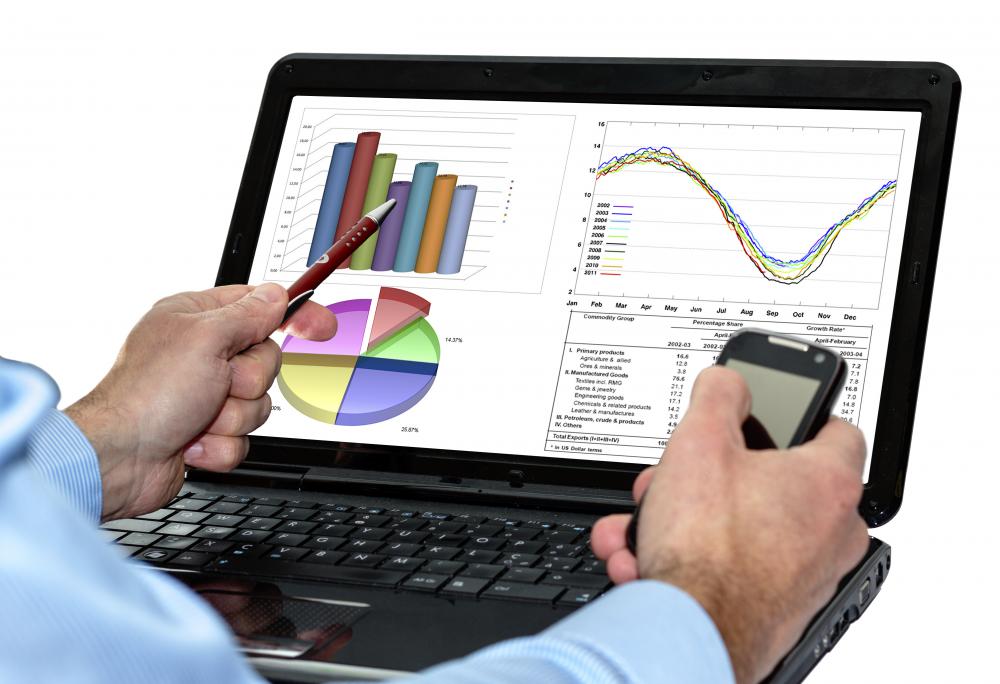At WiseGEEK, we're committed to delivering accurate, trustworthy information. Our expert-authored content is rigorously fact-checked and sourced from credible authorities. Discover how we uphold the highest standards in providing you with reliable knowledge.
What Is a Performance Indicator?
A performance indicator is a pre-established benchmark that a company's actual performance is measured against. One of the ways that a company ensures that it is meeting its objectives is by establishing desired levels of performance. Benchmarks or indexes are determined and set as performance goals. Actual performance is measured against a performance indicator to identify areas that need improvement.
Most organizations, industries, and even governments establish measures of performance. Measures included in a performance indicator may be quantitative or qualitative. For example, the performance of a sales department in an organization may be primarily measured quantitatively against quarterly and annual sales targets. The department is given a number to achieve and the actual amount of sales is reported as a percentage to sales plan.

In the case of the sales department, results that are anything less than 100 percent to sales plan would be considered a performance gap. This is the difference between desired and actual performance. Some organizations use the gap amount to assess company processes, products, employee training and leadership tactics that might need to be improved. A gap analysis can sometimes reveal that a performance indicator is set too high given current market conditions.

A performance indicator may also be used by a government to assess macroeconomic conditions. Depending upon the results obtained, the government may determine it needs to take action to prevent a major depression. Gross domestic product, consumer confidence, and commercial hiring activity are some of the economic performance indicators that a government monitors.

Some companies may use industry averages in order to measure performance. Average revenue and the average amount of time a company's product stays in inventory are some examples of industry benchmarks. This type of comparison is also used by prospective investors to determine the overall financial health of a company and estimate its risk.
Subjective measures of performance might be used in employee evaluations and in issues related to corrective action. While many companies will have some sort of numerical rating system for their employee evaluations, the manner in which they are scored is largely determined by the opinions of the evaluators. For example, an employee may be rated on his problem solving skills, which could be considered to be impressive by one manager, but only adequate by another. The manner in which managers determine what constitutes good problem solving skills is largely based upon experience and personal preference.
AS FEATURED ON:
AS FEATURED ON:













Discussion Comments
GDP is an effective economic performance indicator, but it does fall short in some aspects. For example, GDP does not take into account illegal markets, which are quite large and influential in some countries. GDP does not take into account illegal employees either.
So we can say that GDP is not an entirely accurate indicator. It's still one of the best way to determine how an economy is doing however, alternatives don't exist.
@burcinc-- If the appraisal is based on quantitative indicators, then the same employee will be rated the same way regardless of who evaluates him. So for example, if the indicator is the number of gadgets a worker puts together in one hour, the evaluation will be the same across the board.
If however the appraisal is based on qualitative indicators, then the rating can certainly vary from one evaluator to another. This type of rating not only depends on the aspects of performance the evaluator is asked to rate, it also depends on the evaluator's methods and opinions.
It is possible to regulate this by setting specific objectives and by using pre-determined scales for the evaluator to simply fill out. But if the evaluator is using an essay type appraisal method, the results can come out vastly different because there is too much leeway about how this appraisal is done.
If the performance indicator is a pre-established benchmark, how can different managers rate the same employee differently?
Post your comments